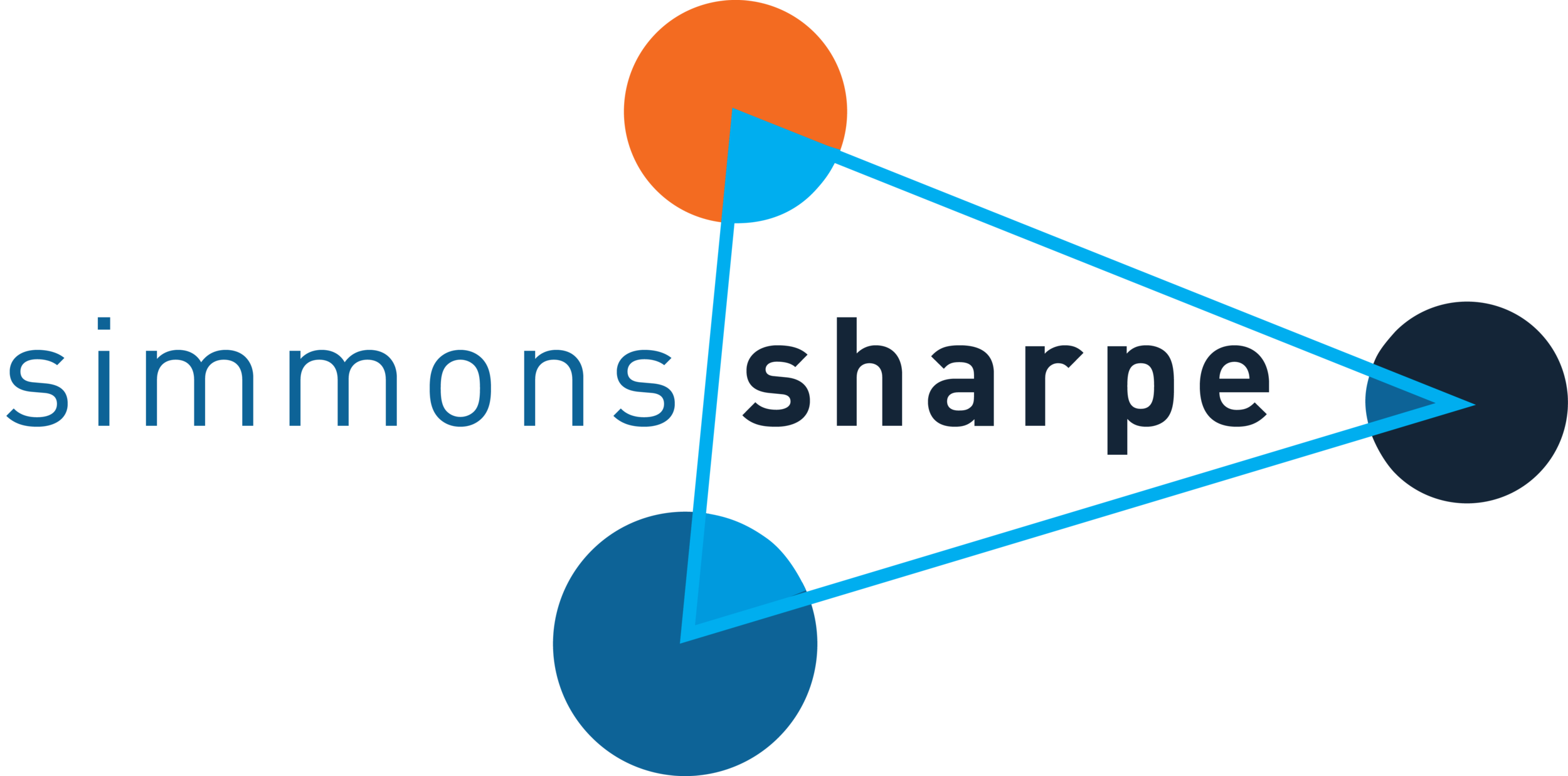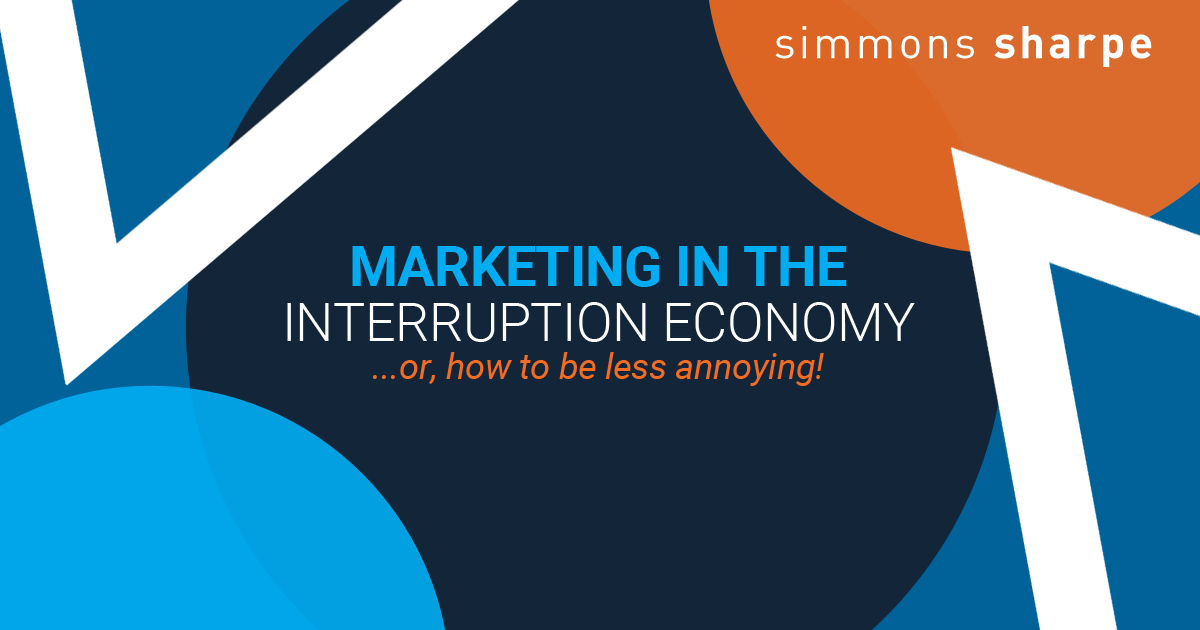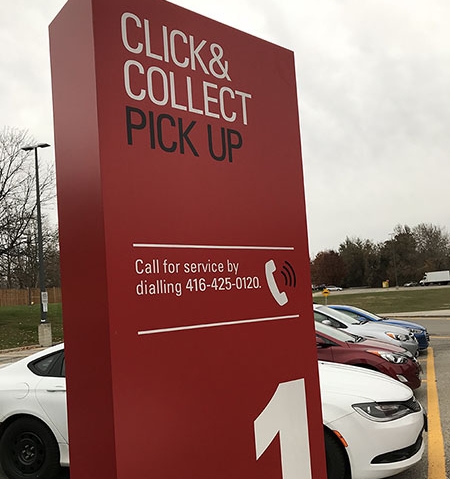Marketing in the Interruption Economy
We're tired of being interrupted. Even phone calls are now annoying, says the last gal with a home phone in Canada. If it's not my Mom or a contractor working on my house, I really don't want to chat, and no, now is not a good time.
Ads are even worse, because they are ubiquitous. According to a recent Forrester report, 38% of US online adults have installed an ad blocker, and 67% of global consumers will trust a stranger's online review more than ads next to search results. Only 40% of ad spending is actually viewed by a real human. Ads are not getting watched, and worse, they are producing negative brand sentiment because they're annoying. So what's an effective marketer to do?
The brainy folks over at McKinsey have actually created a simple mathematical formula (naturally) for calculating the net consumer value of an interruption. We've added one element, ease.
Source: McKinsey, with a small but important tweak by the folks at SSI
Customers will put up with an interruption, and actually value it, if it's relevant to them in particular, occurs at the moment they are considering a purchase, and doesn't require three steps, multiple channels, and a bunch of time to complete the purchase. If they trust the brand, that multiplies their likelihood of purchasing. They will also consider the amount of privacy they have to give up to complete the transaction (location data, credit card, etc). Here are 5 ways brands are improving the equation:
- Create an exclusive and personalized club. According to the Forrester report, 59% of consumers like getting offers reserved for an exclusive group, such as the top tier of a loyalty program. If you don't believe this, try putting a velvet rope and a doorman in front of the bar of a formerly decrepit hotel and watch the line snake around the block.
- Stay in touch. Subscriptions are rising, particularly in the beauty and food categories. Think Blue Apron, Dollar Shave Club, Home Chef, and Birchbox. It's not enough to offer the customer things you (and they) know they like. The new bar includes things they don't know they want but might like - meaning more advanced AI and machine learning is required. Subscriptions are an excellent way to introduce these pleasant surprises - and new sources of revenue.
Engage near the time of purchase. McKinsey calls this "talk to me when I am in shopping mode." If you want to shrink the time to purchase, give consumers the information they need at the time they need it. We think this is one of the biggest retail applications for augmented reality ("AR") - providing additional information about complex purchases using the ever-present smartphone. For example, when marijuana is legalized in Canada on July 1, 2018, many consumers are going to need information about THC content and the like. This could be provided using AR at the point of purchase.
- Ensure your service works with intelligent agents. Ubiquitous voice is rising for a reason. Customers use intelligent voice-activated agents such as Alexa, Siri, or Cortana to avoid seeing ads and other interruptions on digital platforms. According to e-Marketer, in 2017 nearly one-fifth of Americans use a virtual voice assistant at least once a month.
- Make it easy to complete the transaction with a digital wallet in a loyalty app, a cashierless checkout, free delivery, or just preferred parking. With Loblaw's Click & Collect system, less than 90 seconds elapsed between the time I wheeled into one of the 4 reserved red parking spots to when I was driving out with my organic bananas and chicken noodle soup. Grocery shopping just got a whole lot easier.
2. Our client Atlantic Lottery is beta testing a subscription scratch ticket program called Winvelope.
5. Loblaw's Click & Collect - done in 90 seconds.
When marijuana is legalized in Canada in July 2018, retailers could use augmented reality to provide relevant information about various strains at the point of purchase.
And then there's trust. Trust is the multiplier. Trust is built over time, based on engagement and doing what you say you're going to do. It starts with listening, and not always being in transactional sell mode. Brands that are always selling are like that friend on Facebook who's got that one issue - and posts 11 times a day about that and only that. Pretty soon, nobody's listening, and that's no way to build a relationship.
Interruptions are ubiquitous, and annoying. Smart brands will ease the pain and make it worth consumers' while with exclusive, personalized, and timely offers, intelligent subscriptions, relevant information at point-of-purchase, and (relatively) frictionless transactions. Retailers not already experimenting with AI, augmented reality, and digital payments should start, or risk becoming an anachronism.





